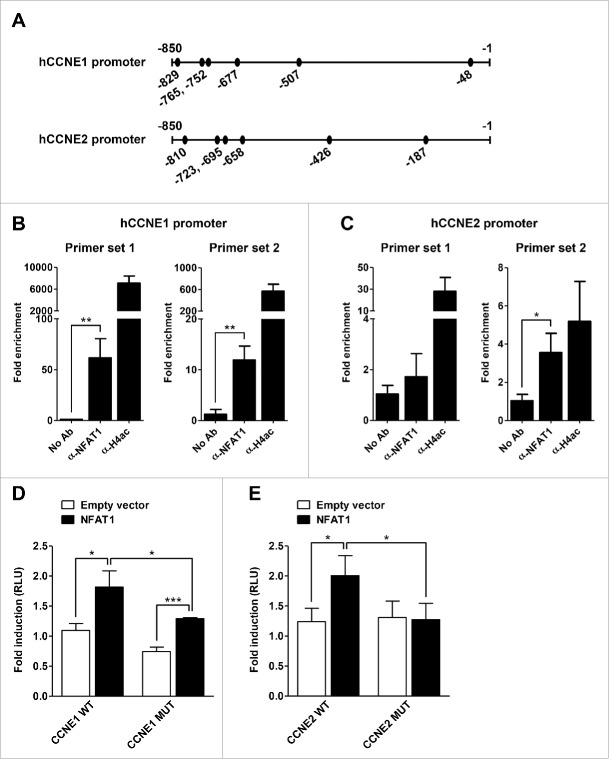Figure 4.
NFAT1 binds and regulates human Cyclin E promoters. (A) Schematic representation of human Cyclin E1 and Cyclin E promoters (hCCNE1 and hCCNE2 promoters, respectively). Black circles represent putative binding sites for NFAT transcription factor. (B and C) Raji cells were stimulated with PMA (10 nM) and Ionomycin (1.0 μM) for 20 minutes. Chromatin was sonicated and immunoprecipitated with a set of NFAT1-specific antibodies (α-NFAT1), anti-acetyl-histone H4 antibody (α-H4ac) as a positive control, or no antibody as a negative control (No Ab). hCCNE1 (B) and hCCNE2 (C) promoters were analyzed by real-time PCR with specific primer sets as described in Materials and Methods. ChIP signals were normalized to the no-antibody control signal (No Ab) and were expressed as fold increase relative to the background (Fold enrichment). (D and E) Jurkat cells were co-transfected with the following plasmids: pcDNA5 (Empty vector) or pcDNA5-NFAT1 (NFAT1), and CCNE1 (D) or CCNE2 (E) reporter plasmids containing either the wild-type (WT) or NFAT-mutant (MUT) proximal promoter regions. After 24 hours, cells were stimulated with PMA (10 nM) and Ionomycin (1 μM) for 16 hours and luciferase activity was measured as described. RLU, Relative Light Units. All results are representative of at least 3 independent experiments. Results are expressed as mean and error bars represent SD. Asterisks indicate significance levels compared to controls (* p < 0.05; ** p < 0.005; *** p < 0.0005).

